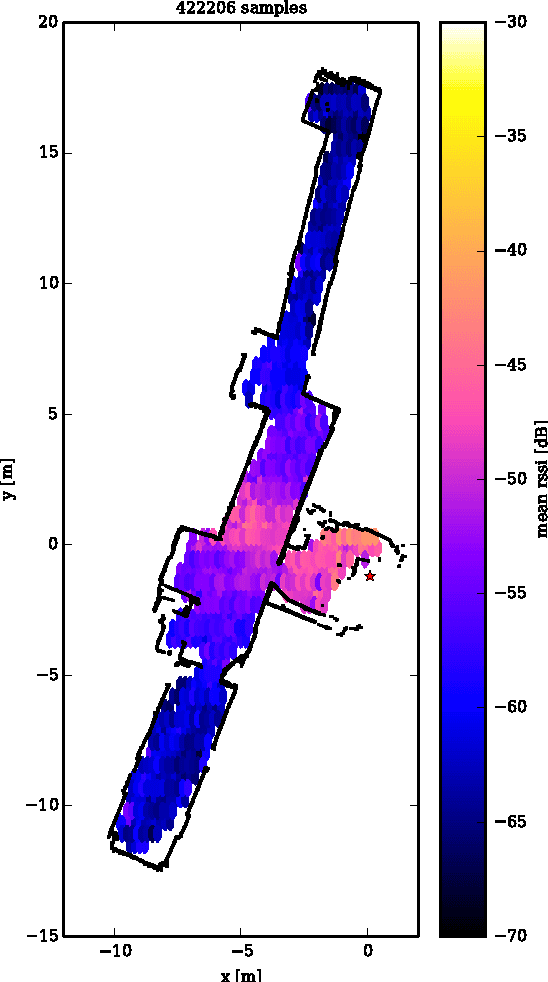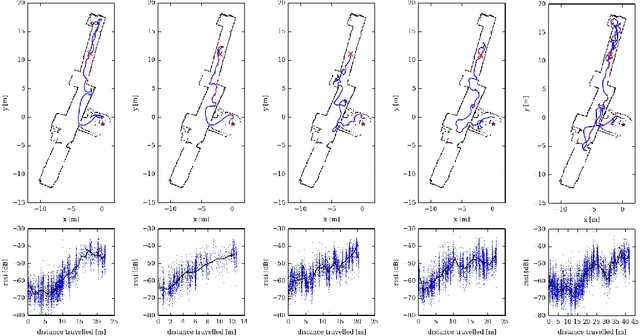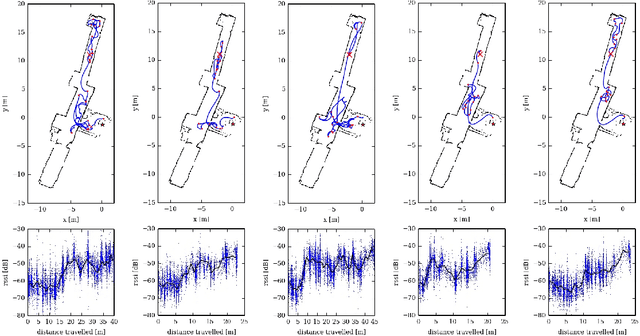Active exploration of sensor networks from a robotics perspective
Paper and Code
Nov 17, 2015



Traditional algorithms for robots who need to integrate into a wireless network often focus on one specific task. In this work we want to develop simple, adaptive and reusable algorithms for real world applications for this scenario. Starting with the most basic task for mobile wireless network nodes, finding the position of another node, we introduce an algorithm able to solve this task. We then show how this algorithm can readily be employed to solve a large number of other related tasks like finding the optimal position to bridge two static network nodes. For this we first introduce a meta-algorithm inspired by autonomous robot learning strategies and the concept of internal models which yields a class of source seeking algorithms for mobile nodes. The effectiveness of this algorithm is demonstrated in real world experiments using a physical mobile robot and standard 802.11 wireless LAN in an office environment. We also discuss the differences to conventional algorithms and give the robotics perspective on this class of algorithms. Then we proceed to show how more complex tasks, which might be encountered by mobile nodes, can be encoded in the same framework and how the introduced algorithm can solve them. These tasks can be direct (cross layer) optimization tasks or can also encode more complex tasks like bridging two network nodes. We choose the bridging scenario as an example, implemented on a real physical robot, and show how the robot can solve it in a real world experiment.
 Add to Chrome
Add to Chrome Add to Firefox
Add to Firefox Add to Edge
Add to Edge